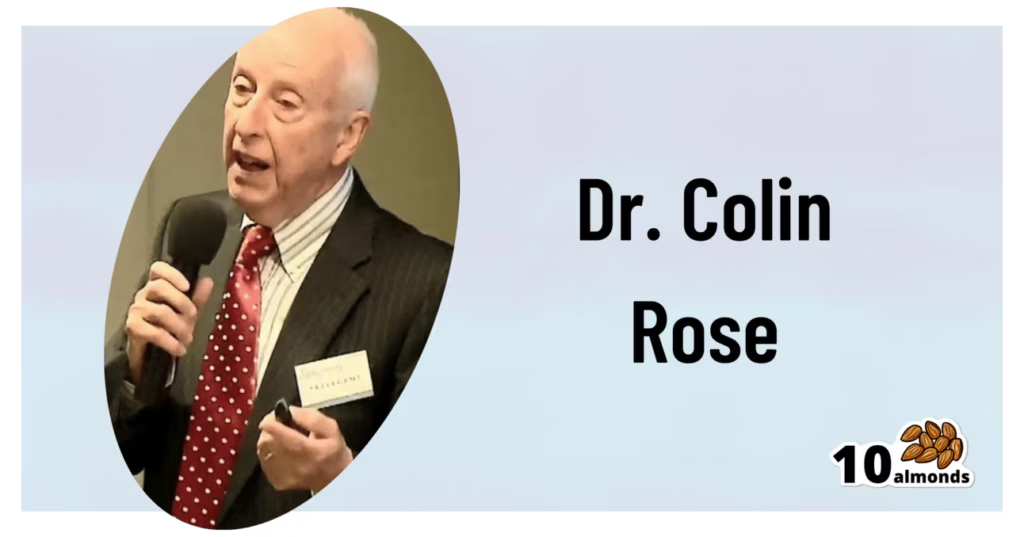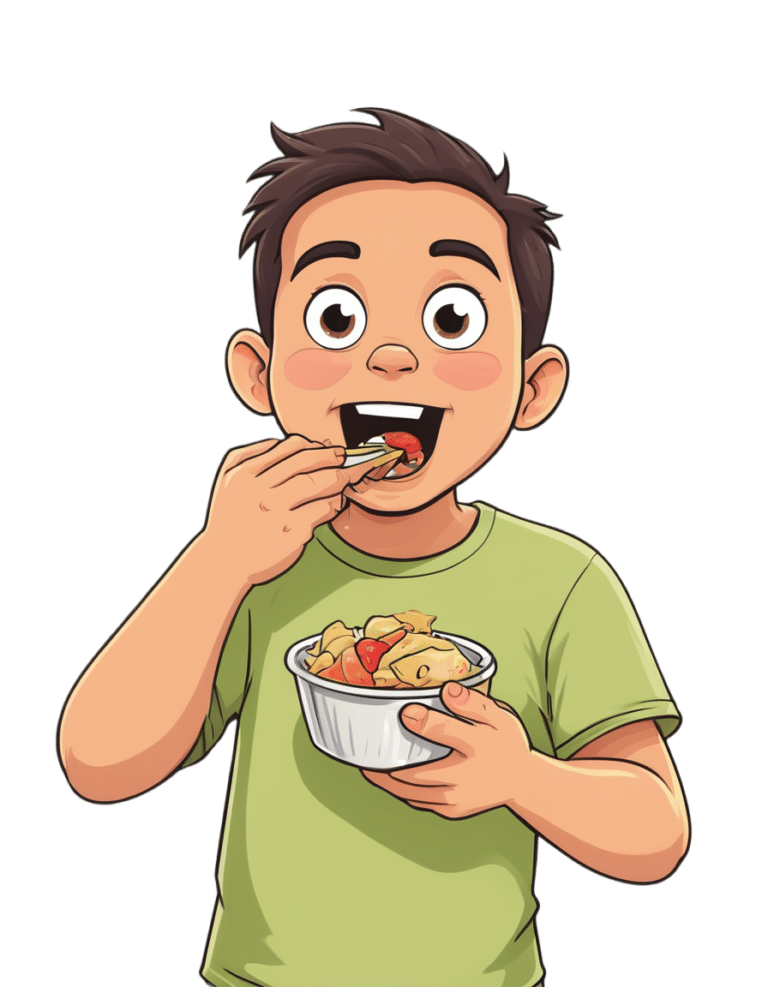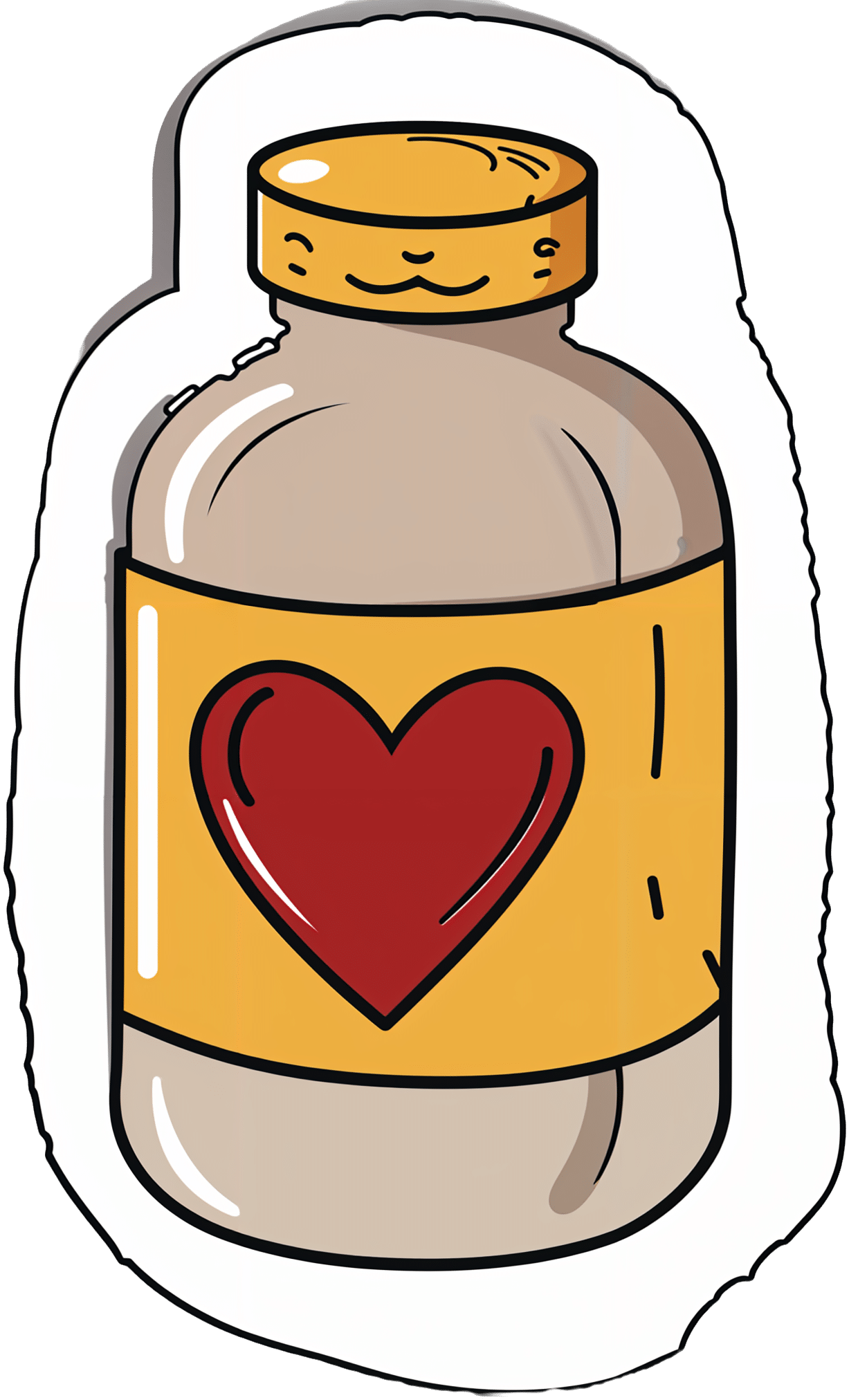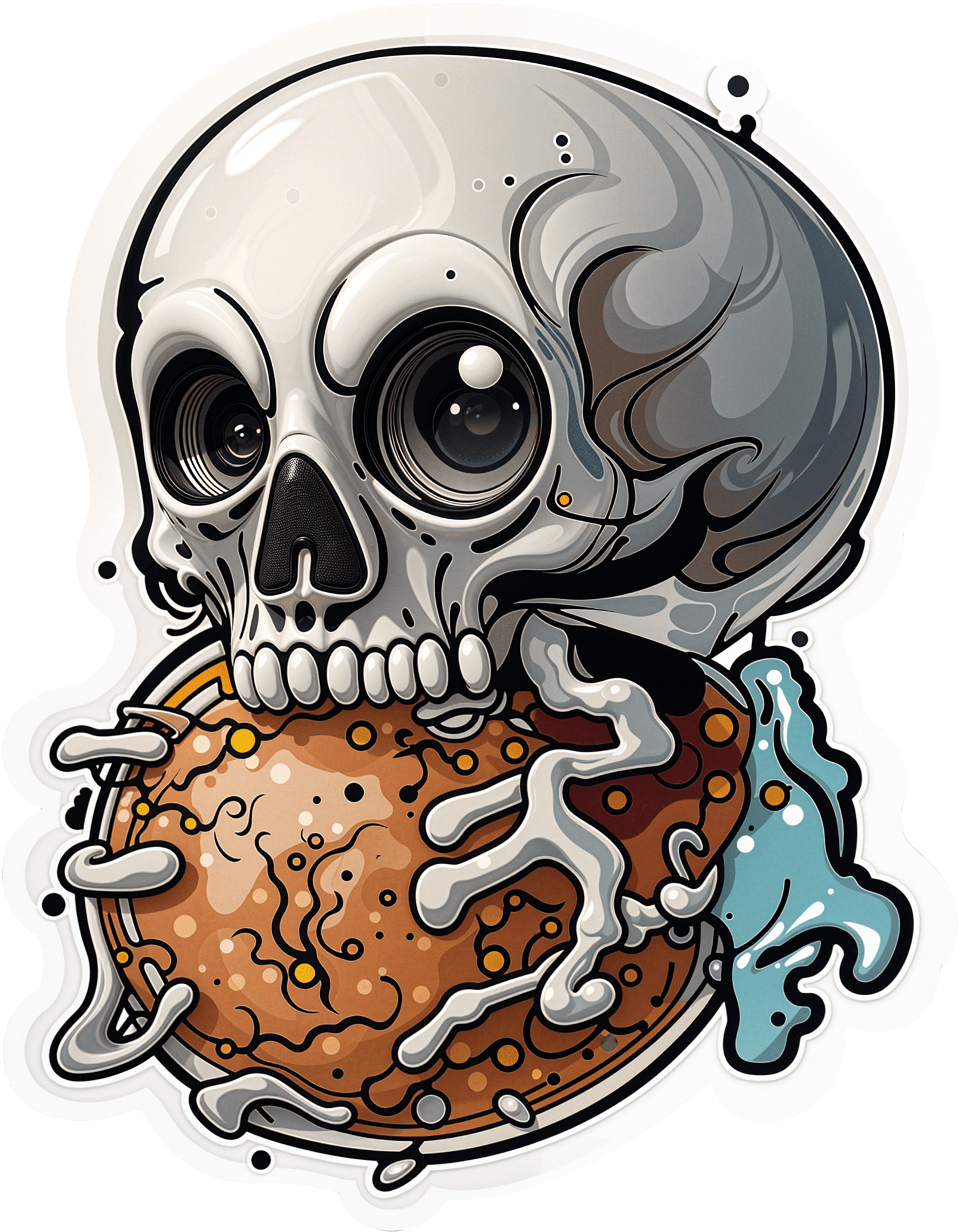
10 Ways To Delay Aging
10almonds is reader-supported. We may, at no cost to you, receive a portion of sales if you purchase a product through a link in this article.

This is Dr. Colin Rose; he is a Senior Associate of the Royal Society of Medicine. He’s also a main contributor to EduScience, a program funded by the E.U. which is designed to enhance the teaching and learning of science in schools in Europe.
His most recent work has been about aging—and how to delay it. We also reviewed his latest book, here:
Delay Ageing – by Dr. Colin Rose
So, what does he want us to know? The key lies in his compilation of ten ways in which we age on a cellular level, and what we can to do slow each one of those:
Damage to DNA accumulates
While DNA can get damaged without any external stimulus to cause that, there are a lot of modifiable factors that we can do to reduce DNA damage. The list is easy: if it causes cancer, it causes aging.
Thus, check out: Stop Cancer 20 Years Ago
Cells become senescent
Our cells are replaced all the time; some sooner than others, but all of them at some point. The problem occurs when cells are outliving their usefulness. If a cell becomes completely immortal, that is cancer, but happily most don’t. Nevertheless, having senescent (aging) cells in the body means that those senescent cells are what get copied forwards by mitosis, and our DNA becomes like a photocopy of a tattered old photocopy of a tattered old photocopy. Which, needless to say, is not good for our health. So, the best thing to do is to kill them earlier:
Yes, really: Fisetin: The Anti-Aging Assassin
Mitochondria become dysfunctional
Without properly functional mitochondria, no living human cell can do its job properly.
Options: 7 Ways To Boost Mitochondrial Health To Fight Disease
Beneficial genes are switched off, harmful genes are on
It’s easy to think of our genes as being immutable, but epigenetics means that our environment (amongst other factors) can mean that our gene expression changes.
Imagine it this way: your genes are a set of instructions for your body. However, your body will act or not on those instructions, depending on other factors. Hormones often play a big part in this; for example sex hormones tell the body which set of genetic instructions to read (and thus what kind of body to build/rebuild), and cortisol or oxytocin can tell the body which set of contingency plans to activate or suppress (respectively). A milder example is gray hair; genes have the program for it, but many other factors inform the body when, if, and how to do it.
Of more concern when it comes to aging is what goes on with more critical systems, such as the brain, in which the aforementioned DNA damage can cause unhelpful instructions to get interpreted, resulting in epigenetic changes that in turn facilitate age-related degeneration.
As to what can be done, see : Klotho: Unzipping The Genes Of Aging?
Stem cells become exhausted
Stem cells can become different kinds of cells, and thus they’re very useful for maintaining a healthy body. However, they get depleted with age. We can slow down the rate of loss, though; for example, intermittent fasting can help:
Per Dr. Li’s 5 Ways To Beat Cancer (And Other Diseases)
And for more detail, see:
Doctor’s Tip: Regeneration (stem cells) — one of your body’s five defense systems
(complete with lists of foods to eat or avoid for stem cell health)
Cells fail to communicate properly
Cells need to talk to each other constantly, to continue doing their jobs. We are one big organism, after all, and not a haphazard colony of the countless cells that constitute such. However, cell signalling gets worse with age, which in turn precipitates others age-related problems. Fortunately, there are nutrients that can improve cellular communication.
For example: PS, We Love You ← this is about phosphatidylserine, also called “PS”
Telomeres become shorter
These protective caps on our DNA suffer the wear-and-tear so that our DNA doesn’t have to. However, as they get shorter, the DNA can start suffering damage. For this reason, telomere length is considered one of the most “Gold Standard” markers of cellular aging.
Here’s what can be done for that: The Stress Prescription (Against Aging!)
The body fails to sense nutritional intake properly
This is mostly about insulin signalling (though problems can occur in other systems too, but we only have so much room here), so it’s important to take care of that.
See: Turn Back The Clock On Insulin Resistance
Proteins accumulate errors
This is due to DNA damage, of course, but there are specific things that can reduce protein error accumulation; see for example:
A quick fix – preventing protein errors extends lifespan
See also: Rapamycin Can Slow Aging By 20% (But Watch Out)
The microbiome becomes unbalanced
We at 10almonds often mention that gut health affects pretty much every other kind of health, and it’s true for aging as well. So, take care of that microbiome!
Here’s a primer: Gut Health 101
Want to know more about delaying aging beyond the cellular level?
Check out: Age & Aging: What Can (And Can’t) We Do About It?
Take care!
Don’t Forget…
Did you arrive here from our newsletter? Don’t forget to return to the email to continue learning!
Recommended
Learn to Age Gracefully
Join the 98k+ American women taking control of their health & aging with our 100% free (and fun!) daily emails:
-
Escape Self-Sabotage
10almonds is reader-supported. We may, at no cost to you, receive a portion of sales if you purchase a product through a link in this article.
Stop Making The Same Mistakes
It’s easy to think that a self-destructive cycle is easy to avoid if you have no special will to self-destruction. However, the cycle is sneaky.
It’s sneaky because it can be passive, and/or omissions rather than actions, procrastinations rather than obvious acts of impulse, and so forth.
So, they’re often things that specifically aren’t there to see.
How to catch them
How often do you think “I wish I had [done xyz]” or “I wish I had [done yxz] sooner”?
Now, how often have you thought that about the same thing more than once? For example, “I should have kept up my exercise”.
For things like this, habit-trackers are a great way to, well, keep track of habits. If for example you planned to do a 10-minute exercise session daily but you’ve been postponing it since you got distracted on January the 2nd, then it’ll highlight that. See also:
How To Really Pick Up (And Keep!) Those Habits
Speaking of habits, this goes for other forms of procrastination, too. For example, if you are always slow to get medical check-ups, or renew your prescriptions, or get ready for some regularly-occurring thing in your schedule, then set a reminder in your preferred way (phone app, calendar on the wall, whatever) and when the appointed time arrives (to book the check-up, renew the prescription, do your taxes, whatever), do it on the day you set your reminder for, as a personal rule for you that you keep to, barring extreme calamity.
By “extreme calamity” we mean less “running late today” and more “house burned down”.
Digital traps
Bad habits can be insidious in other ways too, like getting sucked into social media scrolling (it is literally designed to do that to you; you are not immune modern programming hijacking evolutionary dopamine responses).
Setting a screentime limit (you can specify “just these apps” if you like) will help with this. On most devices, this feature includes a sticky notification in the notification bar, that’ll remind you “27 out of 30 minutes remaining” or whatever you set it for. That’ll remind you to do what you went there to do, instead of getting caught in the endless scroll (and if you went there to just browse, to do so briefly).
Here’s how to set that:
Instructions for iOS devices | Instructions for Android devices
Oh, and on the topic of social media? If you find yourself getting caught up in unproductive arguments on the Internet, try the three-response rule:
- You reply; they reply (no progress made)
- You reply; they reply (still no progress made)
- You reply; they reply (still yet no progress made)
You reply just one more time: “I have a personal rule that if I’m arguing on the Internet and no progress has been made after three replies, I don’t reply further—I find this is helpful to avoid a lot of time lost to pointless arguing that isn’t going anywhere. Best wishes.”
(and then stick to it, no matter how they try to provoke you; best is to just not look until at least the next day)
When “swept up in love” gets to one of those little whirlpools…
The same works in personal relationships, by the way. If for example you are arguing with a loved one and not making progress, it can be good if you both have a pre-arranged agreement that either of you can, up to once on any given day, invoke a “time-out” (e.g. 30 minutes, but you agree the time between you when you first make this standing policy) during which you will both keep out of the other’s way, and come back with a more productive head on (remembering that things go best when it’s you both vs the problem, rather than vs each other).
See also:
Seriously Useful Communication Skills: Conflict Resolution
What if the self-sabotaging cycle is active and apparent?
Well, that is less sneaky, but certainly no less serious, and sometimes moreso. An obvious example is drinking too much; this is often cyclical in nature. We wrote about this one previously:
That article’s alcohol-specific, but the same advices go for other harmful activities, including other substance abuse (which in turn includes binge-eating), as well psychological addictions (such as gambling, for example).
Finally…
If your destructive cycle is more of a rut you’ve got stuck in, a common advice is to change something, anything, to get out of the rut.
That can be very bad advice! Because sometimes the change you go for is absolutely not the change that was needed, and is rather just cracking under pressure and doing something impulsive.
Here’s one way to actively get out of a slump:
Behavioral Activation Against Depression & Anxiety
Note: you do not have to be depressed or anxious to do this. But the point is, it’s a tool you can use even if you are depressed and/or anxious, so it’s a good thing to try for getting out of most kinds of slumps.
And really finally, here’s a resource for, well, the title speaks for itself:
When You Know What You “Should” Do (But Knowing Isn’t The Problem)
Take care!
Share This Post
-
What Your Hands Can Tell You About Your Health
10almonds is reader-supported. We may, at no cost to you, receive a portion of sales if you purchase a product through a link in this article.
Dr. Siobhan Deshauer tells us what our hands say about our health—she’s not practicing palmistry though; she’s a rheumatologist, and everything here is about clinical signs of health/disease.
The signs include…
“Spider fingers” (which your writer here has; I always look like I’m ready to cast a spell of some kind), and that’s really the medical name, or arachnodactyly for those who like to get Greek about it. It’s about elongated digits. Elongated other bones too, typically, but the hands are where it’s most noticeable.
The tests:
- Make a fist with your thumb inside (the way you were told never to punch); does your thumb poke out the side notably past the edge of your hand, unassisted (i.e., don’t poke it, just let it rest where it goes to naturally)?
- Take hold of one of your wrists with the fingers of the other hand, wrapping them around. If they reach, that’s normal; if there’s a notable overlap, we’re in Spidey-territory now.
If both of those are positive results for you, Dr. Deshauer recommends getting a genetic test to see if you have Marfan syndrome, because…
Arachnodactyly often comes from a genetic condition called Marfan syndrome, and as well as the elongated digits of arachnodactyly, Marfan syndrome affects the elastic fibers of the body, and comes with the trade-off of an increased risk of assorted kinds of sudden death (if something goes “ping” where it shouldn’t, like the heart or lungs).
But it can also come from Ehlers-Danlos Syndrome!
EDS is characterized by hypermobility of joints, meaning that they are easily flexed past the normal human limit, and/but also easily dislocated.
The tests:
- Put your hand flat on a surface, and using your other hand, see how far back your fingers will bend (without discomfort, please); do they go further than 90°?
- Can you touch your thumb to your wrist* (on the same side?)
*She says “wrist”; for this arachnodactylic writer here it’s halfway down my forearm, but you get the idea
For many people this is a mere quirk and inconvenience, for others it can be more serious and a cause of eventual chronic pain, and for a few, it can be very serious and come with cardiovascular problems (similar to the Marfan syndrome issues above). This latter is usually diagnosed early in life, though, such as when a child comes in with an aneurysm, or there’s a family history of it. Another thing to watch out for!
Check out the video for more information on these, as well as what our fingerprints can mean, indicators of diabetes (specifically, a test for diabetic cheiroarthropathy that you can do at home, like the tests above), carpal tunnel syndrome, Raynaud phenomenon, and more!
She covers 10 main medical conditions in total:
Click Here If The Embedded Video Doesn’t Load Automatically!
Want to read more?
- We Are Such Stuff As Fish Are Made Of ← because collagen comes up a lot in the video
- How To Really Look After Your Joints
Take care!
Share This Post
-
PS, We Love You
10almonds is reader-supported. We may, at no cost to you, receive a portion of sales if you purchase a product through a link in this article.
PS, we love you. With good reason!
There are nearly 20,000 studies on PS listed on PubMed alone, and its established benefits include:
- significantly improving memory
- potential reversal (!) of neurodegeneration
- reduction of stress activation
- improvement in exercise capacity
- it even helps avoid rejection of medical implants
We’ll explore some of these studies and give an overview of how PS does what it does. Just like the (otherwise unrelated) l-theanine we talked about a couple of weeks ago, it does do a lot of things.
PS = Cow Brain?!
Let’s first address a concern. You may have heard something along the lines of “hey, isn’t PS made from cow brain, and isn’t that Very Bad™ for humans, mad cow disease and all?”. The short answer is:
Firstly: ingesting cow brain tissue is indeed generally considered Very Bad™ for humans, on account of the potential for transmission of Bovine Spongiform Encephalopathy (BSE) resulting in its human equivalent, Creutzfeldt–Jakob Disease (CJD), whose unpleasantries are beyond the scope of this newsletter.
Secondly (and more pleasantly): whilst PS can be derived from bovine brain tissue, most PS supplements these days derive from soy—or sometimes sunflower lecithin. Check labels if unsure.
Using PS to Improve Other Treatments
In the human body, the question of tolerance brings us a paradox (not the tolerance paradox, important as that may also be): we must build and maintain a strong immune system capable of quickly adapting to new things, and then when we need medicines (or even supplements), we need our body to not build tolerance of them, for them to continue having an effect.
So, we’re going to look at a very hot-off-the-press study (Feb 2023), that found PS to “mediate oral tolerance”, which means that it helps things (medications, supplements etc.) that we take orally and want to keep working, keep working.
In the scientists’ own words (we love scientists’ own words because they haven’t been distorted by the popular press)…
❝This immunotherapy has been shown to prevent/reduce immune response against life-saving protein-based therapies, food allergens, autoantigens, and the antigenic viral capsid peptide commonly used in gene therapy, suggesting a broad spectrum of potential clinical applications. Given the good safety profile of PS together with the ease of administration, oral tolerance achieved with PS-based nanoparticles has a very promising therapeutic impact.❞
Nguyen et al, Feb 2023
In other words, to parse those two very long sentences into two shorter bullet points:
- It allows a lot of important treatments to continue working—treatments that the body would otherwise counteract
- It is very safe—and won’t harm the normal function of your immune system at large
This is also very consistent with one of the benefits we mentioned up top—PS helps avoid rejection of implants, something that can be a huge difference to health-related quality of life (HRQoL), never mind sometimes life itself!
What is PS Anyways, and How Does It Work?
Phosphatidylserine is a phospholipid, a kind of lipid, found in cell membranes. More importantly:
It’s a signalling agent, mainly for apoptosis, which in lay terms means: it tells cells when it’s time to die.
Cellular death sounds like a bad thing, but prompt and efficient cellular apoptosis (death) and resultant prompt and efficient autophagy (recycling) reduce the risk of your body making mistakes when creating new cells from old cells.
Think about photocopying:
- Situation A: You have a document, and you want to copy it. If you copy it before it gets messed up, your copy will look almost, if not exactly, like the original. It’ll be super easy to read.
- Situation B: You have a document, and you want to copy it, but you delay doing so for so long that the original is all scuffed and creased and has a coffee stain on it. These unwanted changes will get copied onto the new document, and any copy made of that copy will keep the problems too. It gets worse and worse each time.
So, using this over-simplifier analogy, the speed of ‘copying’ is a major factor in cellular aging. The sooner cells are copied, before something gets damaged, the better the copy will be.
So you really, really want to have enough PS (our bodies make it too, by the way) to signal promptly to a cell when its time is up.
You do not want cells soldiering on until they’re the biological equivalent of that crumpled up, coffee-stained sheet of paper.
Little wonder, then, that PS’ most commonly-sought benefit when it comes to supplementation is to help avoid age-related neurodegeneration (most notably, memory loss)!
Keeping the cells young means keeping the brain young!
PS’s role as a signalling agent doesn’t end there—it also has a lot to say to a wide variety of the body’s immunological cells, helping them know what needs to happen to what. Some things should be immediately eaten and recycled; other things need more extreme measures applied to them first, and yet other things need to be ignored, and so forth.
You can read more about that in Elsevier’s publication if you’re curious 🙂
Wow, what a ride today’s newsletter has been! We started at paracetamoxyfrusebendroneomycin, and got down to the nitty gritty with a bunch of hopefully digestible science!
We love feedback, so please let us know if we’re striking the balance right, and/or if you’d like to see more or less of something—there’s a feedback widget at the bottom of this email!
Share This Post
Related Posts
-
Cordyceps: Friend Or Foe?
10almonds is reader-supported. We may, at no cost to you, receive a portion of sales if you purchase a product through a link in this article.
Cordyceps: friend or foe?
Cordyceps is a famously frightening fungus. It’s the one responsible for “zombie ants” and other zombie creatures, and it’s the basis for the existential threat to humanity in the TV show The Last of Us.
It’s a parasitic fungus that controls the central and peripheral nervous systems of its host, slowly replacing the host’s body, as well as growing distinctive spines that erupt out of the host’s body. Taking over motor functions, it compels the host to do two main things, which are to eat more food, and climb to a position that will be good to release spores from.
Fortunately, none of that matters to humans. Cordyceps does not (unlike in the TV show) affect humans that way.
What does Cordyceps do in humans?
Cordyceps (in various strains) is enjoyed as a health supplement, based on a long history of use in Traditional Chinese Medicine, and nowadays it’s coming under a scientific spotlight too.
The main health claims for it are:
- Against inflammation
- Against aging
- Against cancer
- For blood sugar management
- For heart health
- For exercise performance
Sounds great! What does the science say?
There’s a lot more science for the first three (which are all closely related to each other, and often overlapping in mechanism and effect).
So let’s take a look:
Against inflammation
The science looks promising for this, but studies so far have either been in vitro (cell cultures in petri dishes), or else murine in vivo (mouse studies), for example:
- Anti-inflammatory effects of Cordyceps mycelium in murine macrophages
- Cordyceps sinensis as an immunomodulatory agent
- Immunomodulatory functions of extracts from Cordyceps cicadae
- Cordyceps pruinosa inhibits in vitro and in vivo inflammatory mediators
In summary: we can see that it has anti-inflammatory properties for mice and in the lab; we’d love to see the results of studies done on humans, though. Also, while it has anti-inflammatory properties, it performed less well than commonly-prescribed anti-inflammatory drugs, for example:
❝C. militaris can modulate airway inflammation in asthma, but it is less effective than prednisolone or montelukast.❞
Against aging
Because examining the anti-aging effects of a substance requires measuring lifespans and repeating the experiment, anti-aging studies do not tend to be done on humans, because they would take lifetimes to perform. To this end, it’s inconvenient, but not a criticism of Cordyceps, that studies have been either mouse studies (short lifespan, mammals like us) or fruit fly studies (very short lifespan, genetically surprisingly similar to us).
The studies have had positive results, with typical lifespan extensions of 15–20%:
- The lifespan-extending effect of Cordyceps sinensis in normal mice
- Cordyceps sinensis oral liquid prolongs the lifespan of the fruit fly, Drosophila melanogaster
- Anti-aging activity of polysaccharides from Cordyceps militaris
- Anti-aging effect of Cordyceps sinensis extract
Against cancer
Once again, the studies here have been in vitro, or murine in vivo. They do look good though:
In vitro (human cell cultures in a lab):
In vivo (mouse studies):
Summary of these is: Cordyceps quite reliably inhibits tumor growth in vitro (human cell cultures) and in vivo (mouse studies). However, trials in human cancer patients are so far conspicuous by their absence.
For blood sugar management
Cordyceps appears to mimic the action of insulin, without triggering insulin sensitivity. For example:
The anti-hyperglycemic activity of the fruiting body of Cordyceps in diabetic rats
There were some other rat/mouse studies with similar results. No studies in humans yet.
For heart health
Cordyceps contains adenosine. You may remember that caffeine owes part of its stimulant effect to blocking adenosine, the hormone that makes us feel sleepy. So in this way, Cordyceps partially does the opposite of what caffeine does, and may be useful against arrhythmia:
Cardiovascular protection of Cordyceps sinensis act partially via adenosine receptors
For exercise performance
A small (30 elderly participants) study found that Cordyceps supplementation improved VO2 max by 7% over the course of six weeks:
However, another small study (22 young athletes) failed to reproduce those results:
Cordyceps Sinensis supplementation does not improve endurance exercise performance
In summary…
Cordyceps almost certainly has anti-inflammation, anti-aging, and anti-cancer benefits.
Cordyceps may have other benefits too, but the evidence is thinner on the ground for those, so far.
Don’t Forget…
Did you arrive here from our newsletter? Don’t forget to return to the email to continue learning!
Learn to Age Gracefully
Join the 98k+ American women taking control of their health & aging with our 100% free (and fun!) daily emails:
-
Kettlebell Sport & Fitness Basics – by Audrey Burgio
10almonds is reader-supported. We may, at no cost to you, receive a portion of sales if you purchase a product through a link in this article.
Professional athlete & coach Audrey Burgio covers how to get a full-body workout that will make you stronger and more flexible (there are stretches here too, and many exercises are about strength and suppleness), as well as building stability and balance. In short, more robust and with better mobility.
Which is one of the best things about kettlebell training—unlike dumbbells and barbells, a kettlebell requires the kind of strength that one has to use when doing many routine tasks, from carrying the groceries to moving a big pan in the kitchen.
Because it is otherwise absolutely possible to look like Arnold Schwarzenegger in the gym, and then still pull a muscle moving something at home because the angle was awkward or somesuch!
However, making one’s body so robust does require training safely, and the clear instructions in this book will help the reader avoid injuries that might otherwise be incurred by just picking up some kettlebells and guessing.
Bottom line: if you’d like to get strong and supple from the comfort of your own home, this book can definitely lead the way!
Click here to check out Kettlebell Sport & Fitness Basics, and see the difference in your body!
Don’t Forget…
Did you arrive here from our newsletter? Don’t forget to return to the email to continue learning!
Learn to Age Gracefully
Join the 98k+ American women taking control of their health & aging with our 100% free (and fun!) daily emails:
-
‘Disease X’: What it is (and isn’t)
10almonds is reader-supported. We may, at no cost to you, receive a portion of sales if you purchase a product through a link in this article.
What you need to know
- In January 2024, the World Economic Forum hosted an event called Preparing for Disease X to discuss strategies to improve international pandemic response.
- Disease X is a term used in epidemiology to refer to potential disease threats. It is not a real disease or a global conspiracy.
- Preparation to prevent and respond to future pandemics is a necessary part of global health to keep us all safer.
During the World Economic Forum’s 54th annual meeting in Davos, Switzerland, global health experts discussed ways to strengthen health care systems in preparation for future pandemics. Conspiracy theories quickly began circulating posts about the event and the fictional disease at its center, so-called Disease X.
What is Disease X?
In 2018, the World Health Organization added Disease X to its list of Blueprint Priority Diseases that are public health risks. But, unlike the other diseases on the list, Disease X doesn’t exist. The term represents a hypothetical human disease capable of causing a pandemic. Although experts don’t know what the next Disease X will be, they can make educated guesses about where and how it may emerge—and how we can prepare for it.
Why are we hearing about Disease X now?
COVID-19 has been the deadliest infectious disease outbreak of the 21st century. It’s also an example of a Disease X: a previously unknown pathogen that spreads rapidly around the world, claiming millions of lives.
When the WEF hosted a panel of experts to discuss Disease X, it was the first exposure that many people had to a concept that global health experts have been discussing since 2018.
Even before the routine pandemic preparedness event took place, online conspiracy theorists began circulating false claims that those discussing and preparing for Disease X had sinister motives, underscoring how widespread distrust of global health entities has become in the wake of the COVID-19 pandemic.
Why does Disease X matter?
Epidemiologists use concepts like Disease X to plan for future outbreaks and avoid the mistakes of past outbreaks. The COVID-19 pandemic and the recent non-endemic outbreak of mpox highlight the importance of global coordination to efficiently prevent and respond to disease outbreaks.
Pandemics are inevitable, but the scale of their destruction doesn’t have to be. Major disease outbreaks are likely to become more frequent due to the impacts of climate change. Preparing for a pandemic now helps ensure that the world is better equipped to handle the next one.
This article first appeared on Public Good News and is republished here under a Creative Commons license.
Don’t Forget…
Did you arrive here from our newsletter? Don’t forget to return to the email to continue learning!
Learn to Age Gracefully
Join the 98k+ American women taking control of their health & aging with our 100% free (and fun!) daily emails:








